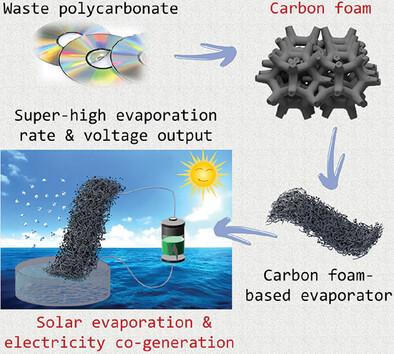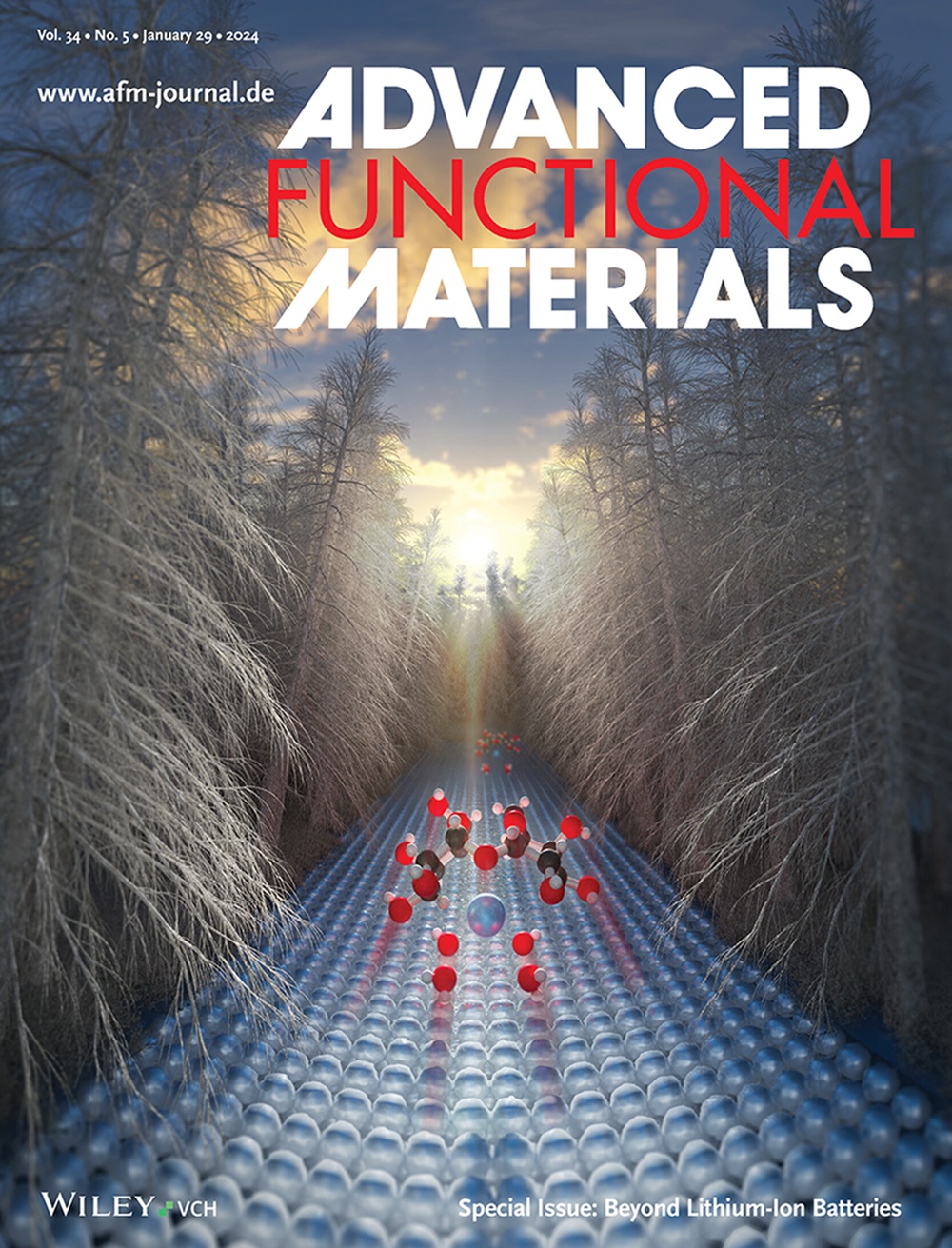All‐In‐One Carbon Foam Evaporators for Efficient Co‐Generation of Freshwater and Electricity
IF 18.5
1区 材料科学
Q1 CHEMISTRY, MULTIDISCIPLINARY
引用次数: 0
Abstract
Combining interfacial solar steam evaporation with power generation to produce freshwater and electricity is an effective approach to alleviating freshwater scarcity and energy crises. However, constructing low‐cost, efficient integrated evaporator‐generator devices remains challenging, and the synergistic mechanism underlying evaporation‐power co‐generation is not yet well understood. Herein, low‐cost carbon foam‐based bifunctional evaporators that effectively achieve freshwater and electricity co‐generation are designed. Carbon foam is obtained from waste polyester using a ball‐milling‐assisted carbonization strategy. The bifunctional evaporator demonstrates excellent water transport, outstanding sunlight absorption, and low evaporation enthalpy. It achieves an ultra‐high evaporation rate of 3.03 kg m

求助全文
约1分钟内获得全文
求助全文
来源期刊

Advanced Functional Materials
工程技术-材料科学:综合
CiteScore
29.50
自引率
4.20%
发文量
2086
审稿时长
2.1 months
期刊介绍:
Firmly established as a top-tier materials science journal, Advanced Functional Materials reports breakthrough research in all aspects of materials science, including nanotechnology, chemistry, physics, and biology every week.
Advanced Functional Materials is known for its rapid and fair peer review, quality content, and high impact, making it the first choice of the international materials science community.
 求助内容:
求助内容: 应助结果提醒方式:
应助结果提醒方式:


